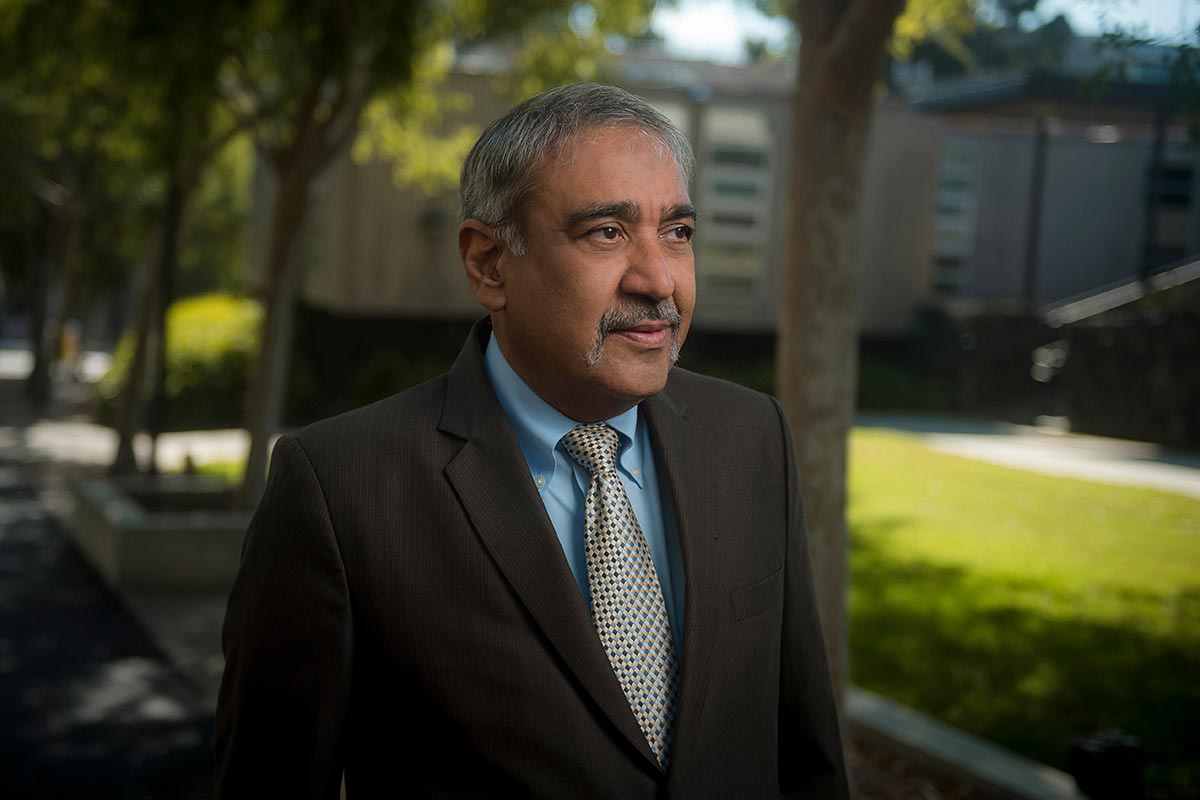About
- About Chancellor Khosla
- Messages from the Chancellor
- About the Chancellor’s Office
- Role of the Chancellor
- Past UC San Diego Chancellors

Pradeep K. Khosla became UC San Diego’s eighth chancellor on August 1, 2012. As UC San Diego’s chief executive officer, he leads a campus with more than 45,000 students within 11 academic, professional and graduate schools and eight undergraduate residential colleges. UC San Diego is also home to the prestigious Scripps Institution of Oceanography and the UC San Diego Health System. With annual revenues of $9.1 billion in fiscal year 2024, UC San Diego is an academic and research powerhouse, with faculty, researchers and staff attracting more than $1.73 billion in sponsored research funding in 2024. UC San Diego is recognized as one of the top 20 research universities in the world and is the largest civilian employer based in San Diego County.
Khosla initiated and led UC San Diego’s first-ever Strategic Plan and the ambitious 10-year, $2 billion Campaign for UC San Diego. The Campaign raised $3.05 billion, exceeding its original goal by more than $1 billion, and making UC San Diego the youngest institution ever to complete a multi-billion-dollar fundraising campaign. During his tenure, Khosla has initiated more than $12 billion in capital improvements to expand health care services, classrooms and research space, double the number of on-campus housing units and enhance the student experience.
Khosla has significantly expanded college access and affordability for underserved populations, initiated interdisciplinary research initiatives to foster collaboration and solve societal challenges, and strengthened university and community relationships and partnerships. Under his leadership, UC San Diego Athletics transitioned to full Division I eligibility in 2024.
An internationally renowned electrical and computer engineer, Khosla previously served as Dean of the College of Engineering and Philip and Marsha Dowd University Professor at Carnegie Mellon University. He spent the majority of his early career at Carnegie Mellon, rising through the ranks from his first position as Assistant Professor in 1986 to his appointment as Dean in 2004. From 1994 to 1996, he also served as a Defense Advanced Research Projects Agency (DARPA) Program Manager in the Software and Intelligent Systems Technology Office, Defense Sciences Office and Tactical Technology Office, where he managed advanced research and development programs.
Khosla is an elected member of the American Academy of Arts and Sciences, National Academy of Engineering and the American Society for Engineering Education. He is a Fellow of the Institute of Electrical and Electronics Engineers, the American Society of Mechanical Engineers, the American Association for Advancement of Science, the American Association of Artificial Intelligence, the Indian Academy of Engineering and the National Academy of Inventors, and the Indian National Science Academy. He is an Honorary Fellow of the Indian Academy of Science. Khosla is also the recipient of numerous awards for his leadership, teaching, and research, including the 2012 Light of India Award, a Lifetime Achievement Award from the American Society of Mechanical Engineers, and the George Westinghouse Award for contributions to improve engineering teaching. In 2012, he was named one of the 50 most influential Indian-Americans by SiliconIndia.
View Chancellor Khosla's Full CV
Grant Oliphant interviews Chancellor Khosla to discuss the transformational growth and philosophy behind one of the nation’s top public universities.
Peter High interviews Chancellor Khosla for this twice-weekly podcast series that features conversations with top executives (CIOs, CDOs, CTOs) and thought leaders at the intersection of business, technology and innovation.
Peter High interviews Chancellor Khosla on UC San Diego's remarkable rise in reputation and applications.